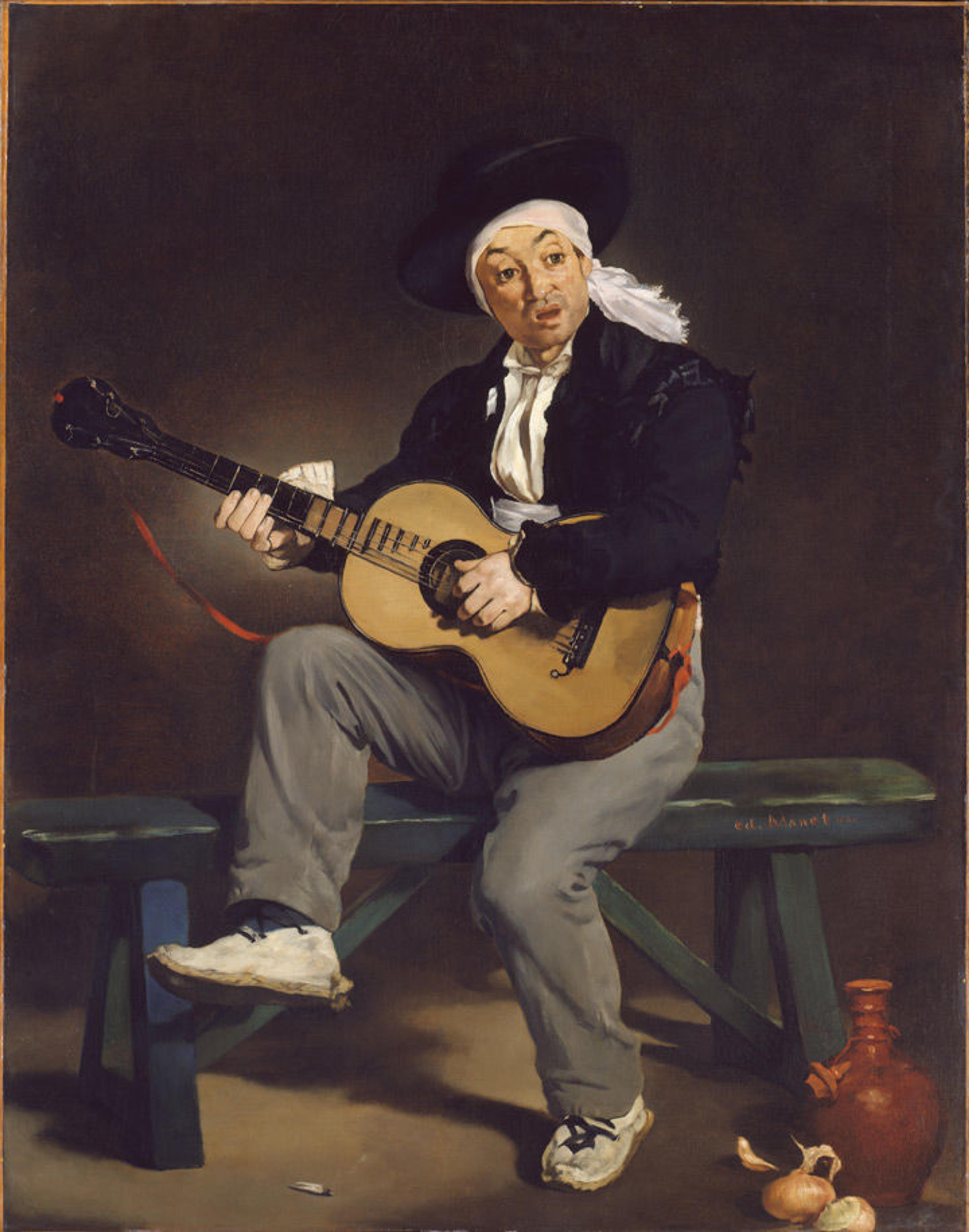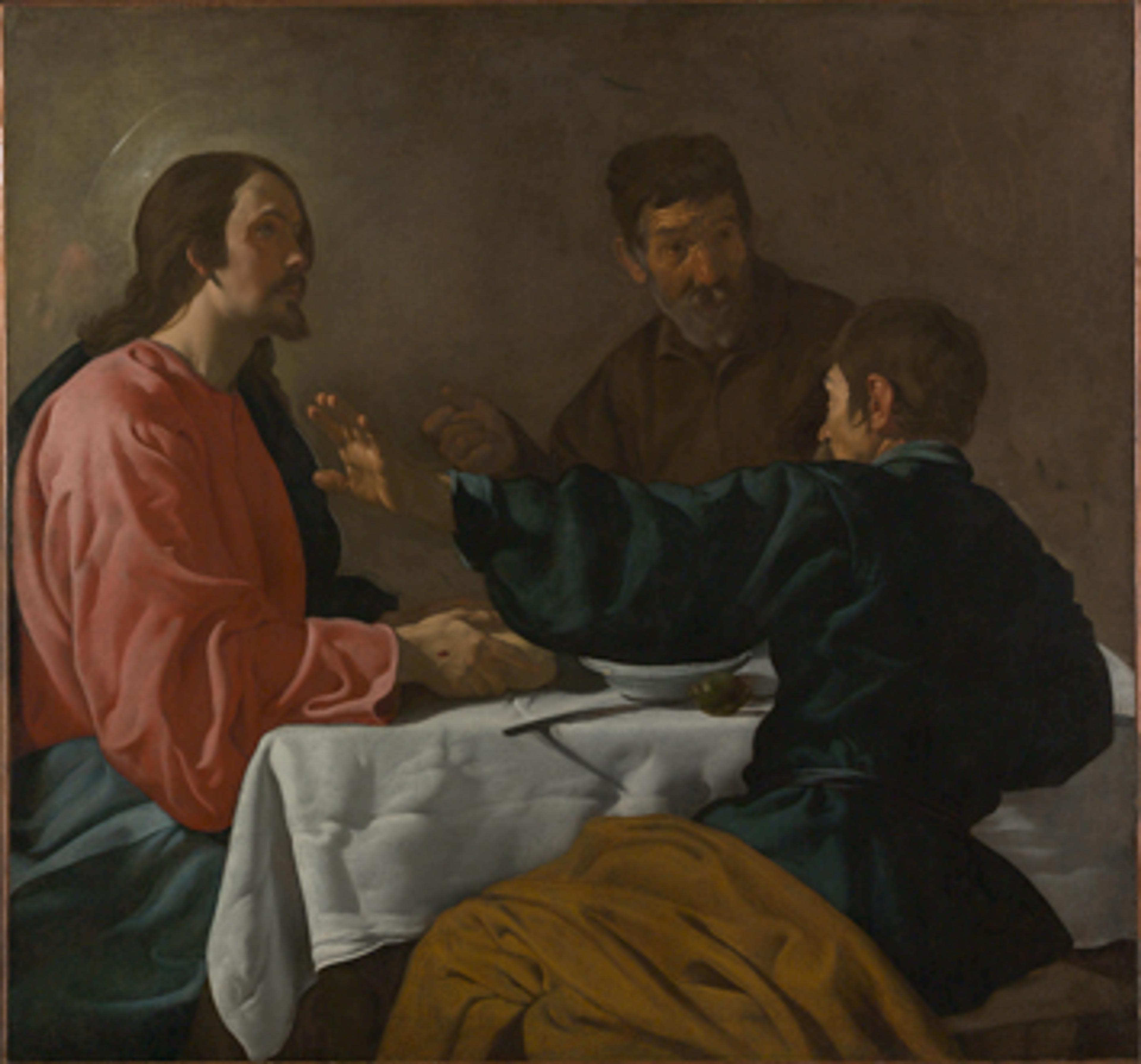
Édouard Manet (French, 1832–1883). The Spanish Singer, 1860. Oil on canvas, 58 x 45 in. (147.3 x 114.3 cm). The Metropolitan Museum of Art, New York, Gift of William Church Osborn, 1949 (49.58.2)
«While admiring the 19th-century European paintings that hang on the grand walls of The Met, I stumbled upon Édouard Manet's The Spanish Singer. To me, this painting seemed different from the meticulous styles of other paintings I had seen from the same time period. Its dark background and use of light actually reminded me more of paintings like the 17th-century Spanish artist Velázquez's The Supper at Emmaus. It made me think about how I have seen American designers make clothing or accessories that use patterns or styles that remind me of objects produced by other cultures.»

Left: Velázquez (Diego Rodríguez de Silva y Velázquez) (Spanish, 1599–1660). The Supper at Emmaus, 1622–23. Oil on canvas, 48 1/2 x 52 1/4 in. (123.2 x 132.7 cm). The Metropolitan Museum of Art, New York, Bequest of Benjamin Altman, 1913 (14.40.631)
As I learned more about The Spanish Singer, I discovered that Manet put aside accuracy at times to express this Spanish singer in a way that, I think, captures his essence. The painting is not an exact depiction of a Spanish singer and guitarist, but it also wasn't meant to be. Manet was depicting aspects of Spanish culture using items in his studio. For example, the singer wears a jacket that may not be Spanish; it looks like a type worn in Marseilles, France. The model's fingers seem to graze the guitar's neck delicately. He holds the guitar as a left-handed person would, but the guitar is strung for a right-handed player. Manet paints the model in a somewhat awkward position and open-mouthed, as if he is in the middle of playing a song and singing along.
Instead of attempting to gloss over unattractive physical attributes, Manet celebrates the reality. He does not attempt to glamorize a leader or member of the wealthy elite, but rather chooses a subject who likely earns a rather modest income. I wonder if Manet wanted to send a message that although Spanish singers are not wealthy, they are worth depicting in a painting as much as anyone else.
Manet avoids the rigidity and staleness I see in some realistic paintings of his time through his choice of subject and how he poses and dresses him. Not only did Manet paint this singer in such a lifelike manner, but he also gave him emotion. I think that, in this painting, Manet celebrates an aspect of Spanish culture and the great emotion the singer is able to convey.
The closest personal experience I have of seeing culture celebrated this way relates to fashion. I have seen inspiration for clothing taken from Latin American countries like Ecuador, where I'm from. During a trip I took to Quito and Azogues last year, I was amazed by how the clothing that my family wears there is similar to the type of clothing I see at shops here in New York. For instance, the colors and shapes that were used to produce totes I saw at Anthropologie have a resemblance to a typical type of carrying bag that my family uses in their everyday life.
Some people regard this type of appropriation as exploitative because the bag, in this case, is less meaningful when produced in a factory, rather than if a weaver of Ecuadorian heritage made it. But to me, my Ecuadorian culture is being appreciated, accepted, and embraced through this artistic form, rather than being ridiculed because it is different.
Manet's painting was his way of depicting Spanish singers, and he made interesting choices as to how to present this "performance" to his audience. His work gave voice to different artistic styles while also creating art that others can enjoy, and I definitely enjoyed seeing The Spanish Singer.